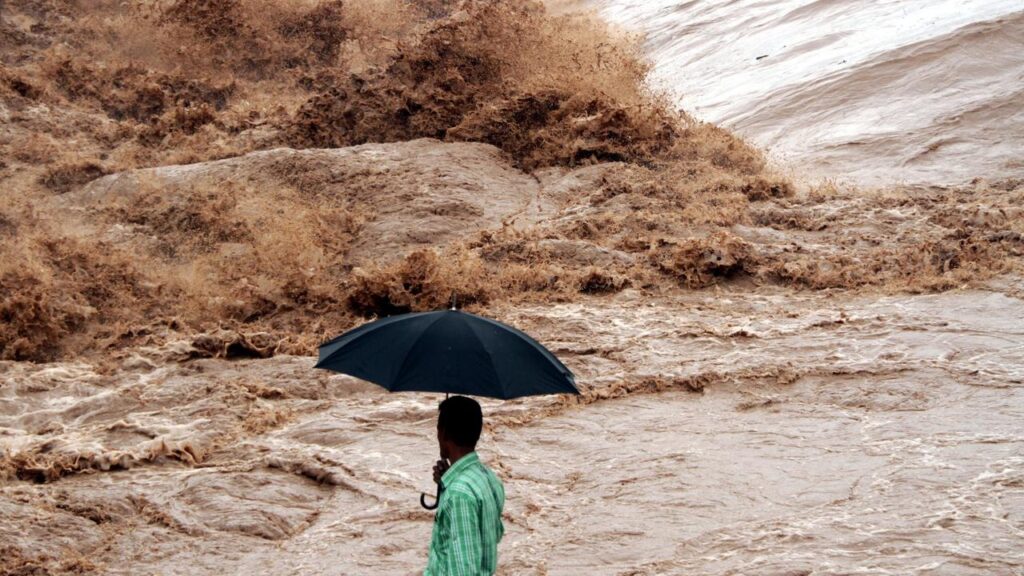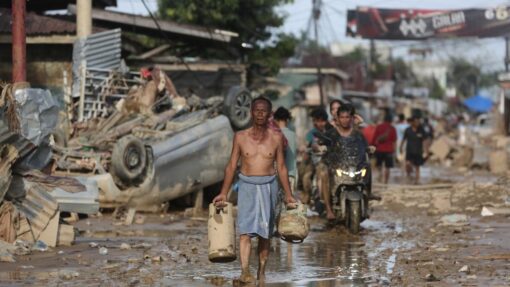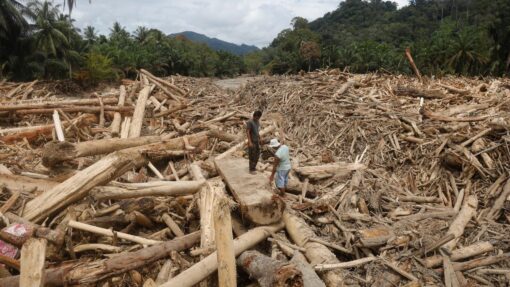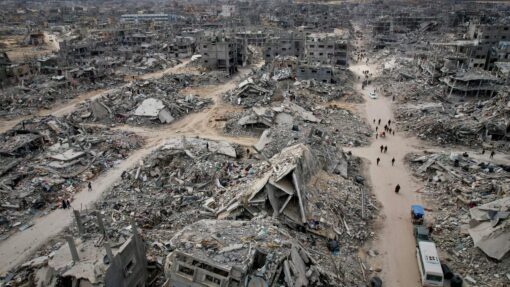Floods kill at least 34 in India-controlled Kashmir
Munir Ahmed and Sheikh Saaliq |

Intense rains have left at least 34 people dead after lashing parts of Pakistan and India and triggering flash floods and landslides in Indian-controlled Kashmir.
Over 210,000 people in Pakistan have been displaced, and the shrine of the founder of the Sikh religion has been submerged.
Heavy downpours and flash floods in the Himalayan region have killed nearly 100 people in August, with forecasters warning rain will continue across the region this week.

Part of a mountainside in Indian-controlled Kashmir’s Jammu region collapsed onto a popular Hindu pilgrimage route following heavy rains in the Katra area. Devotees had been trekking to reach the hilltop temple, which is one of the most visited shrines in northern India, officials said.
The bodies of pilgrims were recovered from under the debris, according to disaster management official Mohammed Irshad, who said at least 18 other people were injured and transported to hospitals.

Rescue teams scoured the area for the missing, while pilgrimages to the shrine have been suspended, Irshad said.
Authorities in Pakistan’s eastern Punjab province called for army assistance in rescue and relief efforts after torrential rains caused major rivers to swell, inundating villages and displacing over 210,000 people, according to Lieutenant General Inam Haider, chairman of the National Disaster Management Authority.
Haider said rescue operations were continuing, with relief supplies being rushed to flood-hit areas.
Army spokesman Ahmed Sharif said two soldiers were killed while helping flood victims.
Floods also submerged the shrine of Guru Nanak, the founder of the Sikh religion, which is located near the Indian border in Narowal district.
Late on Wednesday, authorities carried out a controlled breach of a protective embankment on the Chenab river in Punjab to protect a barrage from collapse under extreme flood pressure.
Local officials said explosives were used to open the right marginal dyke, diverting water into nearby villages, where hundreds of people sitting on higher grounds under the open sky and watching floodwaters submerge their homes.

Rescuers evacuated more than 20,000 people overnight from the outskirts of Lahore, Pakistan’s second-largest city, which faced the risk of flooding, as the Ravi river continued to rise.
Those evacuated were living along the bed of the river, said Irfan Ali Kathia, director-general of the Punjab Disaster Management Authority.
Mass evacuations began earlier this week in six districts of Punjab after heavier-than-normal monsoon rains and the release of water from overflowing dams in neighbouring India triggered flash floods in low-lying border regions.
Kathia warned floodwaters in the Ravi, Chenab and Sutlej rivers were rising dangerously and many villages were inundated in Kasur, Okara, Bahawalnagar, Bahawalpur, Vehari and Sialkot districts.
Rescuers with sniffer dogs continue to search for more than 150 people who have been reported missing this month after flooding killed over 300 residents in three villages in Pakistan’s northwestern Buner district.
Floods have killed more than 800 people in Pakistan since late June.
Scientists say climate change is fuelling heavier monsoon rains in South Asia, raising fears of a repeat of a 2022 weather disaster that struck a third of Pakistan and killed 1739 people.
AP


